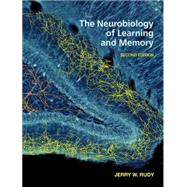The Neurobiology of Learning and Memory

The Neurobiology of Learning and Memory
- ISBN 13:
9781605352305
- ISBN 10:
1605352306
- Edition: 2nd
- Format: Hardcover
- Copyright: 11/15/2013
- Publisher: Sinauer Associates is an imprint of Oxford University Press
- Newer Edition
List Price $142.88 Save
| TERM | PRICE | DUE |
|---|---|---|



List Price $142.88 Save $131.11
In Stock Usually Ships in 24 Hours.
We Buy This Book Back!
Free Shipping On Every Order
Note: Supplemental materials are not guaranteed with Rental or Used book purchases.
Extend or Purchase Your Rental at Any Time
Need to keep your rental past your due date? At any time before your due date you can extend or purchase your rental through your account.
Summary
Part One introduces the idea that synapses modified by experience provide the basis for memory storage. It next describes the long-term potentiation methodology used to study how synapses are modified and concepts needed to understand the organization of synapses. The remaining chapters are organized around the idea that the synaptic changes that support long-term potentiation evolve in four overlapping stages referred to as (a) generation, (b) stabilization, (c) consolidation, and (d) maintenance. The goal of each chapter is to reveal that each stage depends on unique molecular processes and to describe what they are.
Part Two builds on this foundation to show how molecules and cellular processes that have been identified from studies of synaptic plasticity also participate in the making of memories. It discusses some of the basic conceptual issues researchers face in trying to relate memory to synaptic molecules and describes some of the behavioral and neurobiological methods that are used. The chapters describing the processes involved in memory formation and consolidation have been extensively modified to provide a more detailed account of the molecular events that are engaged to ensure that established memories endure. The chapters on memory modulation and the fate of retrieved memories have been extensively modified to provide a more in-depth account of the relevant processes.
Part Three is organized around the multiple memory systems view--that different neural systems have evolved to store the content contained in our experience. It features discussion of the medial-temporal hippocampal system that supports episodic memory, the concept of systems consolidation, and its relationship to Ribot's law--that memories become resistant to disruption as they age. The cortical-striatal system and its relationship to what are called behavioral actions and habits is described, and the book ends with a discussion of neural systems involved in the acquisition and removal of emotional memories.







